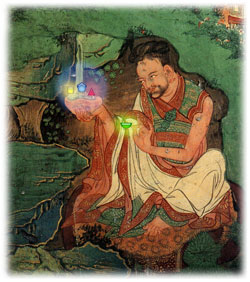Difference between revisions of "Summer and Winter Retreats"
(Created page with "{{DisplayImages|{{Random number}}}} Summer and Winter Retreats 하안거, 동안거 In Korean Buddhism, one finds a legacy of Ganhwa Seon practice, a...") |
|||
| Line 20: | Line 20: | ||
[[Category:Retreat]] | [[Category:Retreat]] | ||
[[Category:Korea]] | [[Category:Korea]] | ||
| + | [[Category:Korean Seon]] | ||
Latest revision as of 18:33, 12 March 2016
Summer and Winter Retreats
하안거, 동안거
In Korean Buddhism, one finds a legacy of Ganhwa Seon practice, a unique method of Zen meditation rarely found in other Buddhist traditions.
In the Jogye Order, over 2,000 monks and nuns attend three-month-long summer and winter retreats every year in Seon (Zen) monasteries and nunneries. During a retreat, called "angeo" (lit. to reside in peace) or “gyeolje,” (lit. binding rule), practitioners devote themselves to Seon meditation and other practices without leaving the temple.
Their daily routine starts at 3 a.m. and in some cases at 2 a.m.
When the retreat ends, Seon practitioners leave to carry out a "traveling practice" called “manhaeng” (lit. ten thousand actions).
The purpose of manhaeng is to apply in real life situations what they have learned while meditating during the retreat.
Source
http://www.koreanbuddhism.net/bbs/board.php?bo_table=1040&wr_id=30
